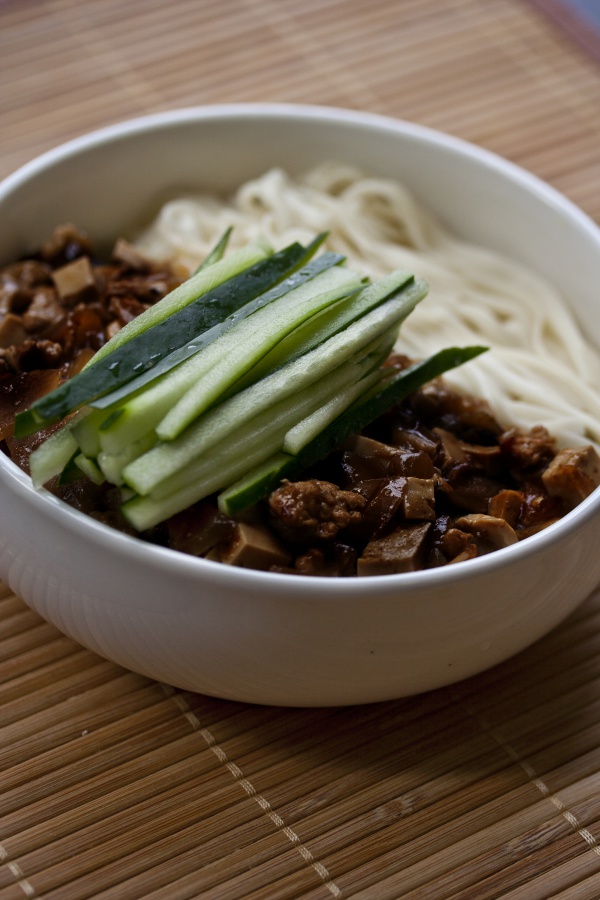Facts About Zhajiangmian
Zhajiangmian, which translates to "noodles with soybean paste" is a cherished Chinese dish featuring thick wheat noodles topped with a rich zhajiang sauce. This savory sauce is typically made by simmering stir-fried ground pork or beef with a salty, fermented soybean paste. Originating from Shandong province, zhajiangmian has become a staple in Northern Chinese cuisine.
The dish is usually served with a variety of fresh or pickled vegetables, such as cucumber, radish, and edamame. It can also be complemented with other proteins like omelet, tofu, or chicken, making it a versatile and customizable meal.
The history of zhajiangmian is quite fascinating. There is a story that vegetarian zhajiangmian was introduced to Beijing during the Qing dynasty. Over time, different regions in China have developed their own unique versions of the dish, incorporating various sauce bases like tianmianjiang, yellow soybean paste, bean paste, hoisin sauce, doubanjiang, doenjang, and even ketchup.
There is a zhajiangmian variant to suit almost everyone's dietary preferences, including vegetarian and halal options. Furthermore, the dish has inspired regional adaptations such as South Korea's jajangmyeon and Japan's jajamen.

 Myanmar (Burma)
Myanmar (Burma)